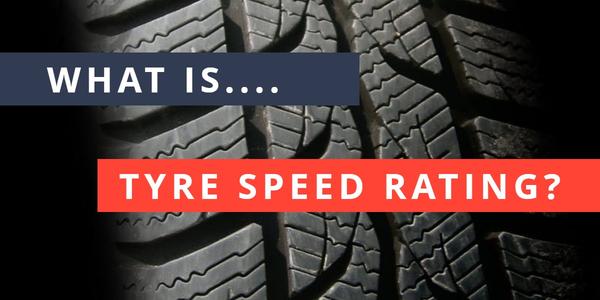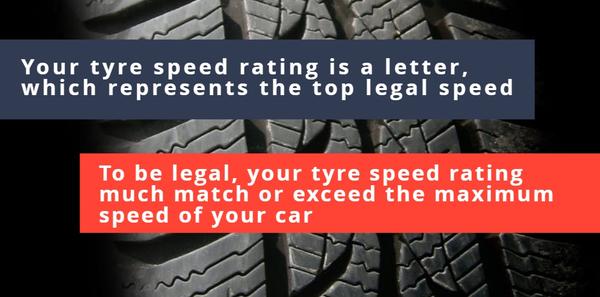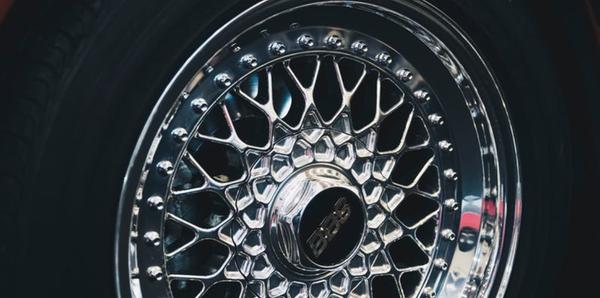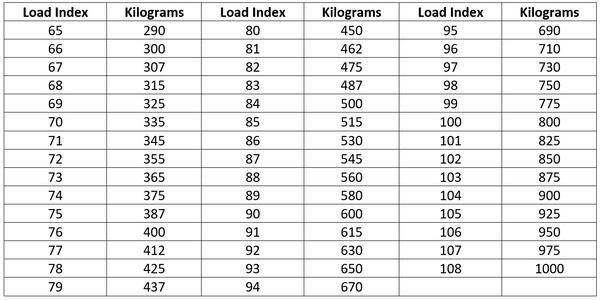Guide
What is tyre speed rating?
A tyre speed rating shows the maximum speed a tyre is legally approved for. Learn where to find it, how to test it and more in Auto Trader’s comprehensive guide.


Words by: Andrew Woodhouse
Published on 22 January 2019 | 0 min read
What is tyre speed rating?
A tyre speed rating shows the maximum speed a tyre is capable of safely maintaining.
When a vehicle moves at higher speeds, the wheels turn faster and more heat is generated in friction on the road. If the tyre can’t cope with this extra heat then they risk failing, which is incredibly dangerous when moving at high speeds. The tyre speed rating indicates the top speed the tyre can support under its approved load capacity. For example, a tyre with a speed rating of H can go up to 130mph. In knowing the tyre speed rating, you can safeguard your tyres and keep yourself safer when driving.
When a vehicle moves at higher speeds, the wheels turn faster and more heat is generated in friction on the road. If the tyre can’t cope with this extra heat then they risk failing, which is incredibly dangerous when moving at high speeds. The tyre speed rating indicates the top speed the tyre can support under its approved load capacity. For example, a tyre with a speed rating of H can go up to 130mph. In knowing the tyre speed rating, you can safeguard your tyres and keep yourself safer when driving.
Where can I find my tyre speed rating?
You can find your tyre speed rating on the sidewall of the tyre. The tyre speed rating is represented by a letter at the end of a string of numbers.
The tyre speed rating is normally the final letter, found after the wheel diameter / rim size, for example 205/55R16 91V – with V being your tyre speed rating. The vehicle’s handbook will also tell you the minimum tyre speed and load ratings you’ll need.
The tyre speed rating is normally the final letter, found after the wheel diameter / rim size, for example 205/55R16 91V – with V being your tyre speed rating. The vehicle’s handbook will also tell you the minimum tyre speed and load ratings you’ll need.
Tyre speed rating chart by letter
Each letter corresponds with a legal top speed. There can be as much as 10kph (approx. 6mph) in the difference between speed ratings, so it’s important that the tyre speed rating is the correct one.
Here’s what each letter translates to in mph and kph.
Here’s what each letter translates to in mph and kph.
- N: 87mph or 140kph
- P: 93mph or 150kph
- Q: 99mph or 160kph
- R: 106mph or 170kph
- S: 112mph or 180kph
- T: 118mph or 190kph
- U: 124mph or 200kph
- H: 130mph or 210kph
- V: 149mph or 240kph
- Z: 150+ mph or 240+kph
- W: 168mph or 270kph
- Y: 186mph or 300kph

How is tyre speed tested?
Tyre speeds are tested to EU standards, which is why ratings are normally given in kph and therefore why the ratings in mph are at irregular increases.
Tyres are tested by engineers, who run the tyre for 10-minute intervals at different top speeds (in increments of approximately 10kph steps) until the required speed has been met. For example, a tyre will have to pass the test at 130mph to secure a tyre speed rating of 130mph. The final rating is the maximum speed the tyre is legally approved for.
Tyres are tested by engineers, who run the tyre for 10-minute intervals at different top speeds (in increments of approximately 10kph steps) until the required speed has been met. For example, a tyre will have to pass the test at 130mph to secure a tyre speed rating of 130mph. The final rating is the maximum speed the tyre is legally approved for.
Tyre speed rating insurance implications
You can invalidate your car insurance by fitting new tyres that have a lower speed rating than the manufacturer’s original fit.
Generally speaking, there’s no problem with fitting new tyres that have a higher tyre speed rating – just note that it will probably cost you more and there may not be any significant benefit. To be legal, your tyre speed rating much match or exceed the maximum speed of your car.
Generally speaking, there’s no problem with fitting new tyres that have a higher tyre speed rating – just note that it will probably cost you more and there may not be any significant benefit. To be legal, your tyre speed rating much match or exceed the maximum speed of your car.

How can I find my tyre speed?
If you can’t find the tyre speed rating on the tyre or in your vehicle handbook, then you may be able to find this information online or at a local garage.
Some tyre companies also offer a tyre finding service that uses your vehicle registration number (VRM) to choose the correct tyres for your vehicle.
Some tyre companies also offer a tyre finding service that uses your vehicle registration number (VRM) to choose the correct tyres for your vehicle.
Can I mix tyre speed ratings?
Mixing tyre speed ratings isn’t recommended.
If you are in a situation where you must mix tyre speed ratings (after an emergency puncture, for example) then make sure the lower-rated tyres are on the front axle to prevent turning more sharply than you intended (oversteering). This is advised whether your vehicle is front-wheel or four-wheel drive. In this instance, you shouldn’t drive faster than your lowest rated tyres permit.
If you are in a situation where you must mix tyre speed ratings (after an emergency puncture, for example) then make sure the lower-rated tyres are on the front axle to prevent turning more sharply than you intended (oversteering). This is advised whether your vehicle is front-wheel or four-wheel drive. In this instance, you shouldn’t drive faster than your lowest rated tyres permit.
Tyre markings explained
Alongside the tyre speed rating, the tyre’s markings will also show you the size, dimensions and composition. Using the example marking of 205/55R16 91V, we’ll quickly cover what each bit means.
The tyre size:
The tyre size:
- First up is the tyre’s width (205 in this example). The width is presented in millimetres, from sidewall to sidewall.
- The aspect ratio is the height of the tyre sidewall as a percentage of the tyre’s width, so 55% in our example.
- The first letter (R) refers to the tyre’s construction. Most modern tyres are R, which is radial construction. You may also find B (bias belt) and D (diagonal).
- After this is the wheel’s diameter, which is the wheel rim size the tyre is intended to be fitted to. It’s given in inches.

Is a higher speed rating better?
A higher speed rating tends to mean that the tyre can better cope with acceleration, braking and high-speed cornering. They can also offer improved fuel efficiency.
This doesn’t mean you have to go out and buy a differently rated set of tyres, though. Most modern cars already have a higher tyre speed rating that’s higher than the vehicle’s maximum speed. This offers improved safety by helping to ensure the performance of the tyres exceeds the performance of the car. As a rule, the tyre speed ratings should match the official top speed of your car.
This doesn’t mean you have to go out and buy a differently rated set of tyres, though. Most modern cars already have a higher tyre speed rating that’s higher than the vehicle’s maximum speed. This offers improved safety by helping to ensure the performance of the tyres exceeds the performance of the car. As a rule, the tyre speed ratings should match the official top speed of your car.
Which brand of tyres is best?
When shopping for tyres, there are a few things to keep in mind:
- Wider tyres with a larger diameter often have a higher speed rating, and so can cope with higher speeds.
- Manufacturers tend to fit alloy wheels with low-profile tyres due to their aesthetic appeal, so higher performance tyres are usually fitted.
- Small city cars normally have a T rating, and family cars normally have H or V ratings.
- Rating don’t progress alphabetically. Z rated tyres are for speeds above 149mph, but Y rated tyres are for speeds above 186mph.